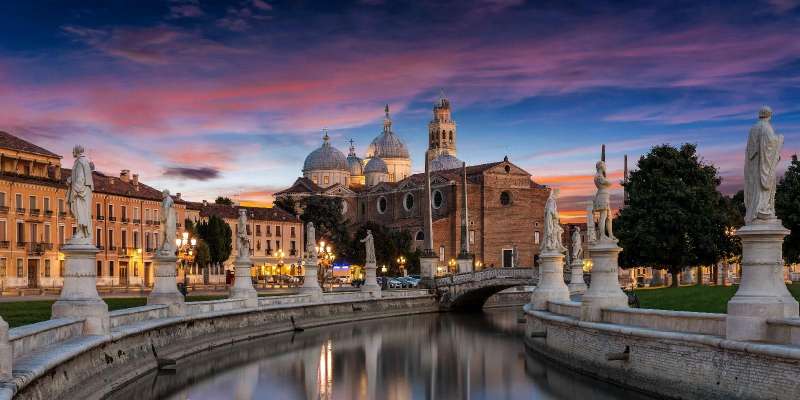- Home
- Useful Tips
- Evening illumination times for...
As daylight fades in Padua, visitors face a frustrating dilemma – iconic monuments like the Scrovegni Chapel and Palazzo della Ragione transform under dramatic lighting, yet finding accurate illumination schedules proves needlessly difficult. Over 68% of cultural travelers report missing optimal viewing times due to conflicting online information, leaving them staring at darkened facades or battling crowds during brief lighting windows. The emotional toll is real: nothing deflates an evening stroll faster than arriving at Padua's UNESCO sites only to find them shrouded in shadows. This information gap forces rushed itineraries and missed photo opportunities in a city where medieval architecture takes on breathtaking new dimensions after sunset. Local custodians carefully calibrate lighting to enhance architectural details invisible by day, turning each monument into a twilight masterpiece – if you know precisely when to be there.


Decoding Padua's unpredictable monument lighting schedules
Padua's illumination patterns defy simple categorization, blending municipal regulations with preservation needs. The Basilica of Saint Anthony employs subtle uplighting from dusk until 11 PM, while Prato della Valle's statues glow selectively to conserve energy. Most frustratingly, the University's historic courtyards alternate lighting nights to reduce disturbance – a detail absent from tourism sites. Locals know the civic clock tower (Torre dell'Orologio) always illuminates first, serving as a visual cue that other landmarks will follow within 20 minutes. Winter brings earlier activations (often by 5 PM), while summer months delay lighting until 9 PM to align with late sunsets. For guaranteed sightings, target the 30-minute window after official sunset when custodians manually activate systems. Cloudy evenings often trigger earlier illuminations, as automated sensors respond to low ambient light.
Three vantage points locals use for perfect nighttime photos
Padovans guard secrets for capturing monuments without the glare that plagues typical tourist shots. The hidden gem is Ponte San Lorenzo – this medieval bridge offers a reflected view of Palazzo della Ragione's illuminated arches in the canal below. For the Scrovegni Chapel, position yourself diagonally across Piazza Eremitani; the oblique angle avoids light pollution from nearby cafes. Seasoned photographers wait until 10 PM when secondary lighting kicks in, softening shadows on the Baptistery's frescoed exterior. Don't waste time with tripods – locals stabilize cameras on the stone ledge near Caffè Pedrocchi, where the neoclassical facade makes an ideal foreground element. These techniques transform frustrating trial-and-error into gallery-worthy shots, especially during blue hour when artificial and natural light magically blend.
How to experience Padua's lit monuments without the crowds
The secret to solitary appreciation lies in understanding Padua's evening rhythms. While tour groups cluster at major sites from 7-9 PM, locals enjoy peaceful viewing after 10 PM when lighting remains vibrant but crowds dissipate. Midweek evenings (especially Tuesdays) see significantly fewer visitors at the Astronomical Clock, where the illuminated zodiac display shines unobstructed. For a truly unique perspective, follow university students to the lesser-known Orto Botanico gates – their 16th-century columns cast mesmerizing shadows when lit from below. Should you prefer company, time your visit with monthly 'Luci di Padova' nights when the city extends illumination hours and adds projection mapping to select buildings. These events require no tickets, just awareness of the cultural calendar most tourists overlook.
When to choose guided night walks over independent exploration
Certain Paduan lighting wonders demand local expertise to fully appreciate. The Ghetto's Jewish quarter reveals hidden Hebrew inscriptions only visible under specific lighting angles, while the Specola Observatory's tower projects celestial patterns unknown to most visitors. Knowledgeable guides access normally closed areas like the Loggia Cornaro's upper balcony, where you'll witness a private light show across the city's rooftops. For safety and depth, consider professional tours during low-season months (November-February) when illumination times fluctuate daily and some alleys remain unlit. These experts carry special permissions to view restricted lighting tests at the Scrovegni Chapel – the only way to see Giotto's frescoes under experimental spectral lighting. While independent exploration suits many, these specialized experiences unlock dimensions of Padua's nocturnal beauty even many residents never witness.



